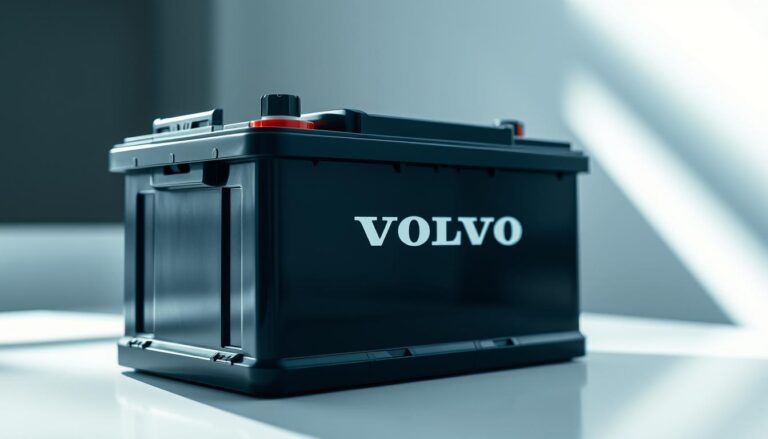Understanding the regeneration process on your Volvo truck is crucial for maintaining optimal performance and avoiding costly downtime. Whether you’re experiencing your first regeneration cycle or looking to better understand why your truck seems to be regenerating frequently, this comprehensive guide will answer your most pressing questions about Volvo’s DPF regeneration duration, process, and troubleshooting.
What Is DPF Regeneration on a Volvo Truck?
Volvo’s DPF system captures soot particles and burns them during regeneration
Regeneration, often called “regen” by drivers, is the process where your Volvo truck’s Diesel Particulate Filter (DPF) cleans itself by burning accumulated soot particles at high temperatures. This environmental system prevents harmful emissions from entering the atmosphere and is a critical component of all modern diesel engines, including Volvo’s D11, D13, and D16 models.
The DPF works by capturing soot particles from the exhaust stream. Over time, these particles accumulate and eventually need to be burned off to prevent filter clogging and maintain engine performance. This burning process is what we call regeneration.
Types of Regeneration in Volvo Trucks
- Passive Regeneration: Occurs automatically during normal driving when exhaust temperatures are naturally high enough.
- Active Regeneration: Automatically initiated by the engine control module while driving when soot levels reach a predetermined threshold.
- Parked Regeneration: Manually initiated when the truck is stationary after a dashboard notification.
- Forced Regeneration: Performed using a diagnostic tool when other regeneration methods have failed or been interrupted.
How Long Does a Regen Take on a Volvo?
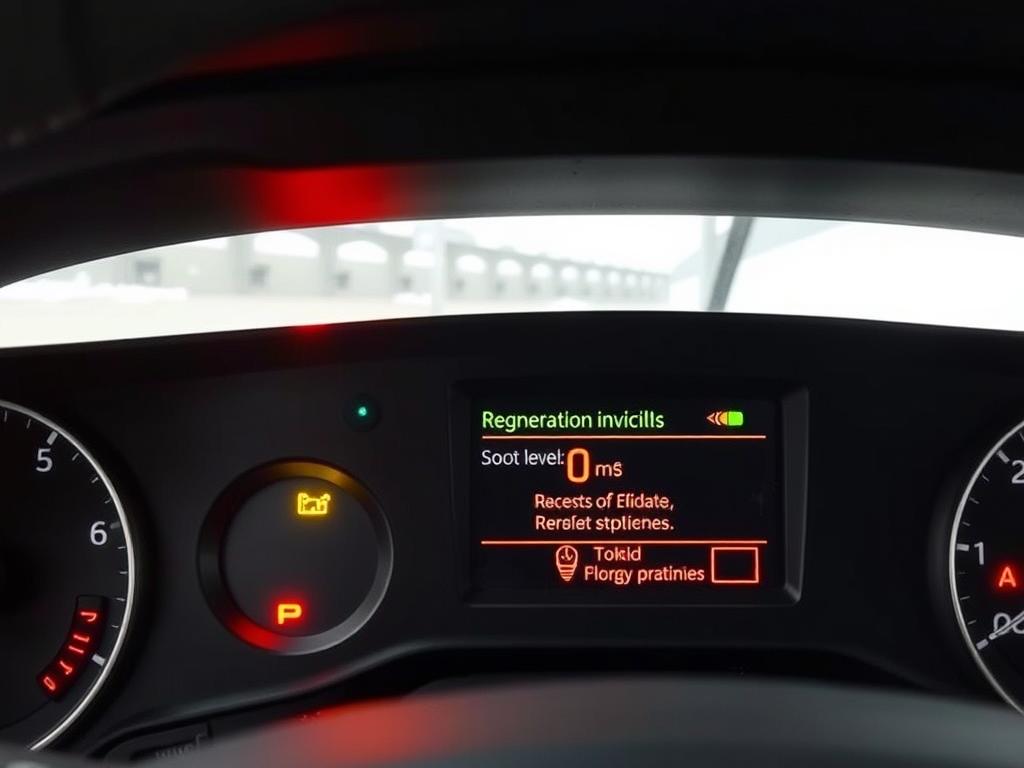
The duration of a regeneration cycle on your Volvo truck varies depending on several factors, including the type of regeneration, soot load, and environmental conditions. Here’s a breakdown of typical duration times for different regeneration types:
| Regeneration Type | Duration | Conditions | Driver Action Required |
| Passive Regeneration | Continuous | Highway driving, high load | None |
| Active Regeneration | 20-40 minutes | While driving | Continue normal driving |
| Parked Regeneration | 30-60 minutes | Vehicle stationary | Initiate via dashboard |
| Forced Regeneration | 45-60+ minutes | Service procedure | Diagnostic tool required |
Parked Regeneration Duration on Volvo Trucks
When your Volvo truck requests a parked regeneration (indicated by a flashing DPF light), you can expect the process to take between 30-60 minutes. The exact time depends on the soot load in your DPF filter. Volvo D13 engines typically complete the process in about 40 minutes under normal conditions, while heavily loaded filters may take longer.
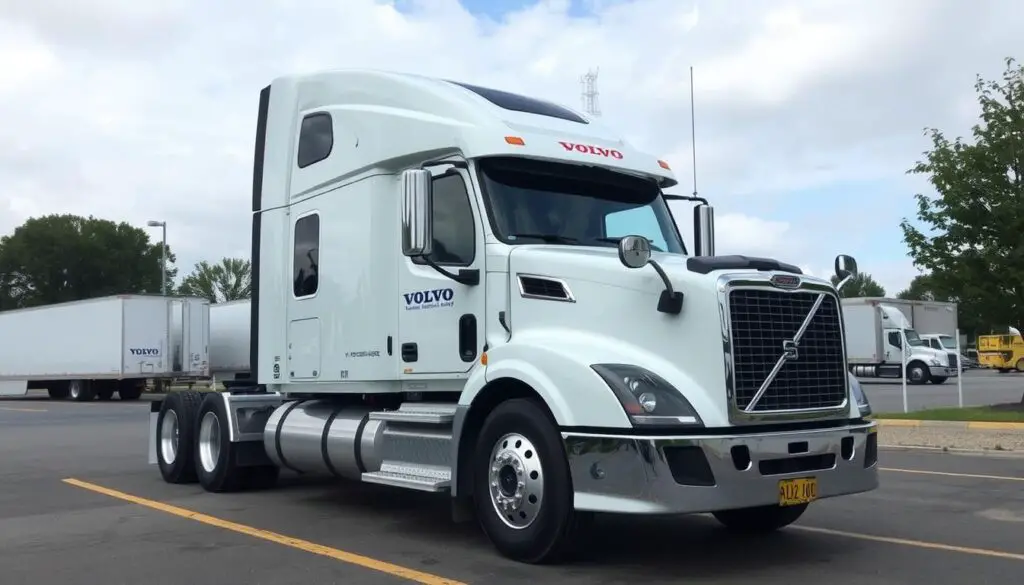
During a parked regeneration, your Volvo’s engine will automatically increase to a preset high idle speed. This raises exhaust temperatures to approximately 1,000°F (538°C) to effectively burn off accumulated soot. The process continues until the soot level reaches a predetermined low threshold, typically 0-5% as shown on your dashboard display.
Active Regeneration Duration While Driving
Active regenerations occur automatically while driving and typically take 20-40 minutes to complete on Volvo trucks. During this process, you may notice slightly reduced fuel economy and increased engine noise as the system works to maintain the higher exhaust temperatures needed to burn soot.
Most drivers won’t even notice when an active regeneration is occurring, as the process is designed to be seamless. However, you might observe these indicators:
- Slightly higher engine idle speed
- Increased engine fan operation
- A mild burning smell from the exhaust
- Higher exhaust gas temperatures
- DPF status indicator on the dashboard
Factors Affecting Regeneration Duration on Volvo Trucks
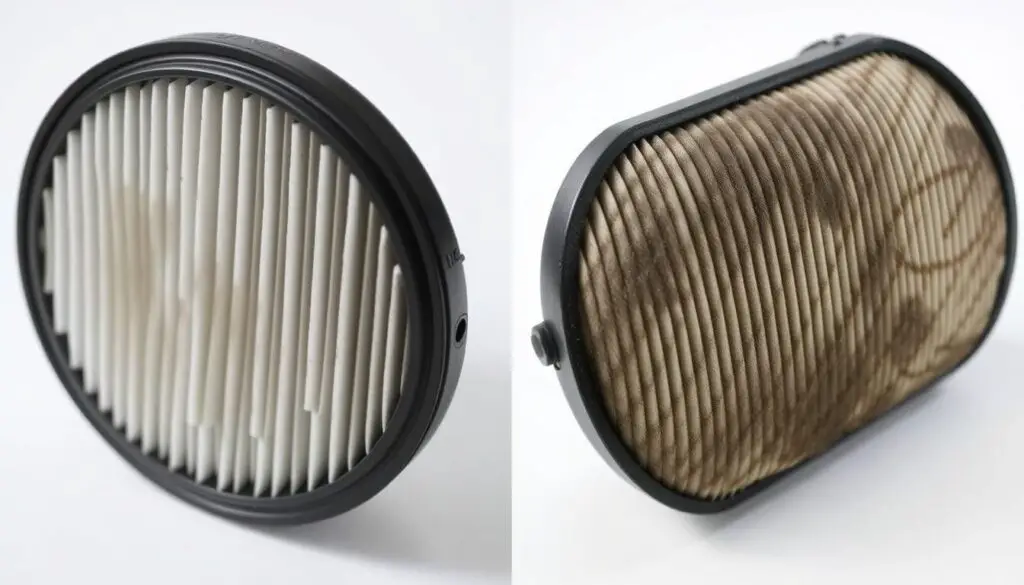
Several factors can significantly impact how long a regeneration takes on your Volvo truck. Understanding these variables helps set realistic expectations and identify potential issues:
Engine Temperature and Ambient Conditions
Cold ambient temperatures can extend regeneration time as the system must work harder to reach and maintain the high temperatures needed for effective soot burning. Volvo’s official service documentation indicates that regenerations can take up to 15-20% longer in temperatures below 40°F (4°C).
Driving Patterns Impact
- Short-haul operations: More frequent regenerations due to insufficient passive regeneration opportunities
- Stop-and-go driving: Extended regeneration times due to cooler exhaust temperatures
- Highway driving: More efficient regenerations due to naturally higher exhaust temperatures
DPF Condition Factors
- Soot load percentage: Higher loads require longer regeneration times
- Filter age: Older filters may take longer to regenerate effectively
- Ash accumulation: Non-combustible ash buildup can extend regeneration duration
Engine Health and Fuel Quality
Engine performance issues can significantly impact regeneration duration. Problems with fuel injectors, EGR systems, or turbochargers can lead to incomplete combustion, increasing soot production and regeneration frequency. Similarly, poor fuel quality with high sulfur content can contaminate the DPF and extend regeneration times.
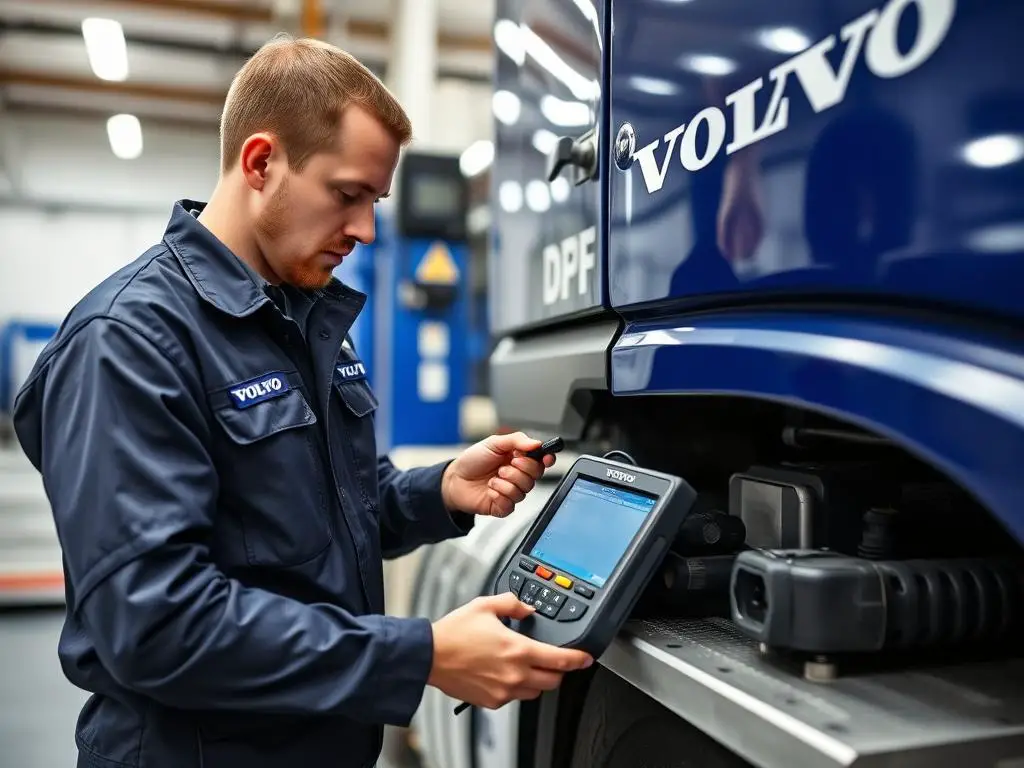
According to Volvo’s technical service bulletins, using fuel with sulfur content exceeding 15 ppm can increase regeneration duration by up to 25% and significantly reduce DPF service life. Always use ultra-low sulfur diesel (ULSD) in your Volvo truck to maintain optimal regeneration performance.
Volvo-Specific Regeneration Recommendations
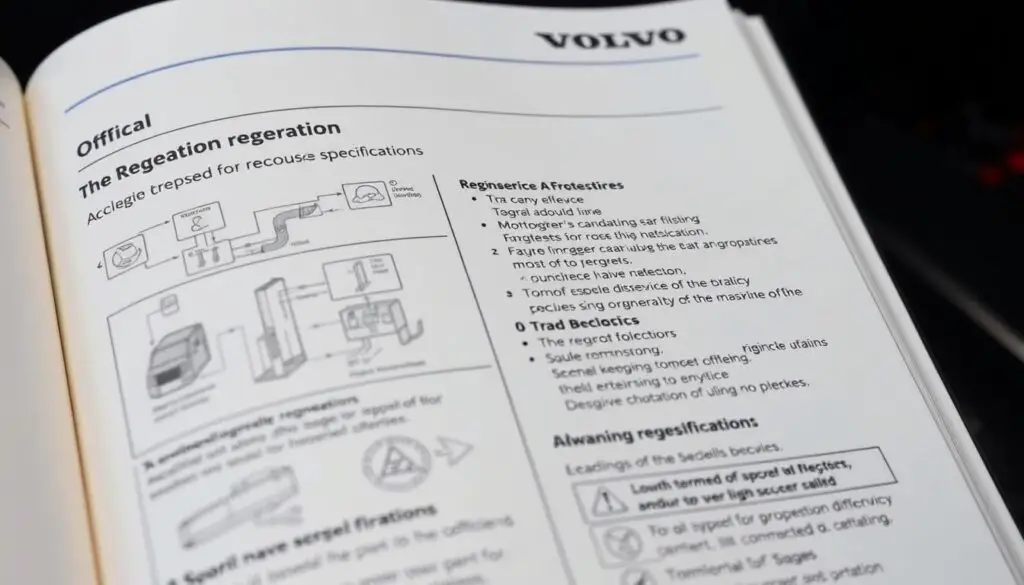
Volvo Trucks provides specific recommendations for optimal regeneration performance across their engine lineup. Following these guidelines can help ensure efficient regeneration cycles and extend the life of your DPF system:
Model-Specific Regeneration Times
| Volvo Engine Model | Typical Parked Regen Time | Typical Forced Regen Time | Soot Level Threshold |
| D11 | 30-45 minutes | 40-50 minutes | 40-45% |
| D13 | 35-50 minutes | 45-60 minutes | 45-50% |
| D16 | 40-55 minutes | 50-65 minutes | 45-50% |
Official Volvo Parked Regeneration Procedure
- Park the vehicle in a safe location away from flammable materials
- Ensure the engine is at normal operating temperature
- Apply the parking brake and place transmission in neutral
- Ensure the accelerator pedal is not pressed
- Press and hold the regeneration switch for 2-3 seconds
- Engine will automatically increase to high idle (around 1400 RPM)
- Allow the process to complete without interruption (30-60 minutes)
- Regeneration is complete when engine returns to normal idle
Warning: Never interrupt a regeneration cycle unless absolutely necessary. Interruptions can lead to incomplete soot removal, increased back pressure, and potential engine derates.
Consequences of Interrupted Regeneration
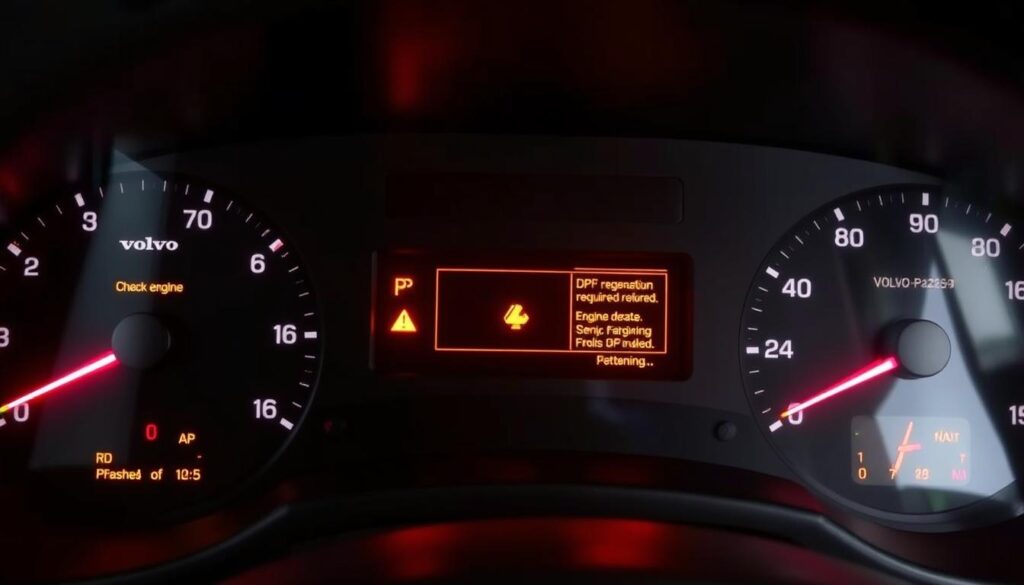
Interrupting a regeneration cycle on your Volvo truck can lead to several negative consequences. When a regeneration is stopped prematurely, the soot burning process remains incomplete, leaving partially burned particles in the DPF that can be more difficult to remove in subsequent cycles.
Completed Regeneration Benefits
- Restored engine performance
- Improved fuel economy
- Extended DPF service life
- Reduced risk of engine derates
- Lower maintenance costs
Interrupted Regeneration Consequences
- Engine power limitations (derates)
- Speed restrictions (as low as 5 MPH)
- Increased fuel consumption
- Potential DPF damage
- Costly service repairs
According to Volvo service documentation, repeatedly ignoring regeneration requests or interrupting cycles can lead to progressive engine derates. Initially, torque may be limited, followed by speed restrictions of 55 MPH, then 45 MPH, and eventually as low as 5 MPH in severe cases, effectively immobilizing your truck.
Troubleshooting Failed or Incomplete Regenerations
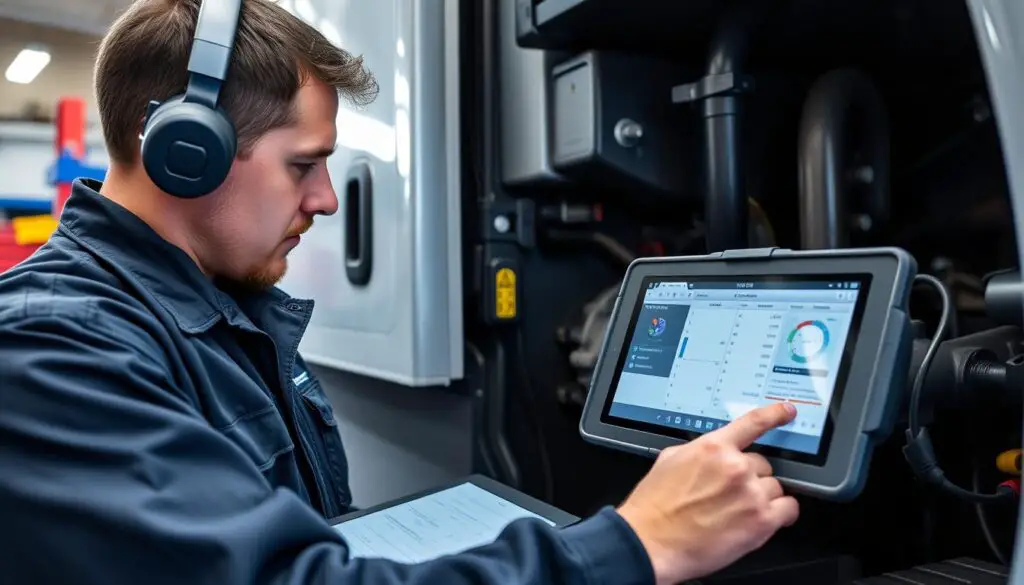
When your Volvo truck experiences regeneration issues, identifying the root cause is essential for proper resolution. Here are common problems and their solutions:
Common Regeneration Failure Indicators
- Regeneration taking significantly longer than normal: May indicate exhaust system restrictions or sensor issues
- Regeneration completing too quickly: Often indicates a system component failure detected by the ECM
- Repeated regeneration requests: May signal incomplete soot removal or excessive soot production
- Check engine light during regeneration: Indicates a detected fault in a related system
Diagnostic Approach for Failed Regenerations
- Check for active fault codes using a diagnostic tool
- Inspect exhaust system components for physical damage
- Verify fuel quality and proper oil level/condition
- Test exhaust pressure sensors and temperature sensors
- Evaluate engine performance for issues affecting combustion
- Inspect the diesel oxidation catalyst (DOC) for contamination
- Assess DPF for excessive ash accumulation requiring cleaning
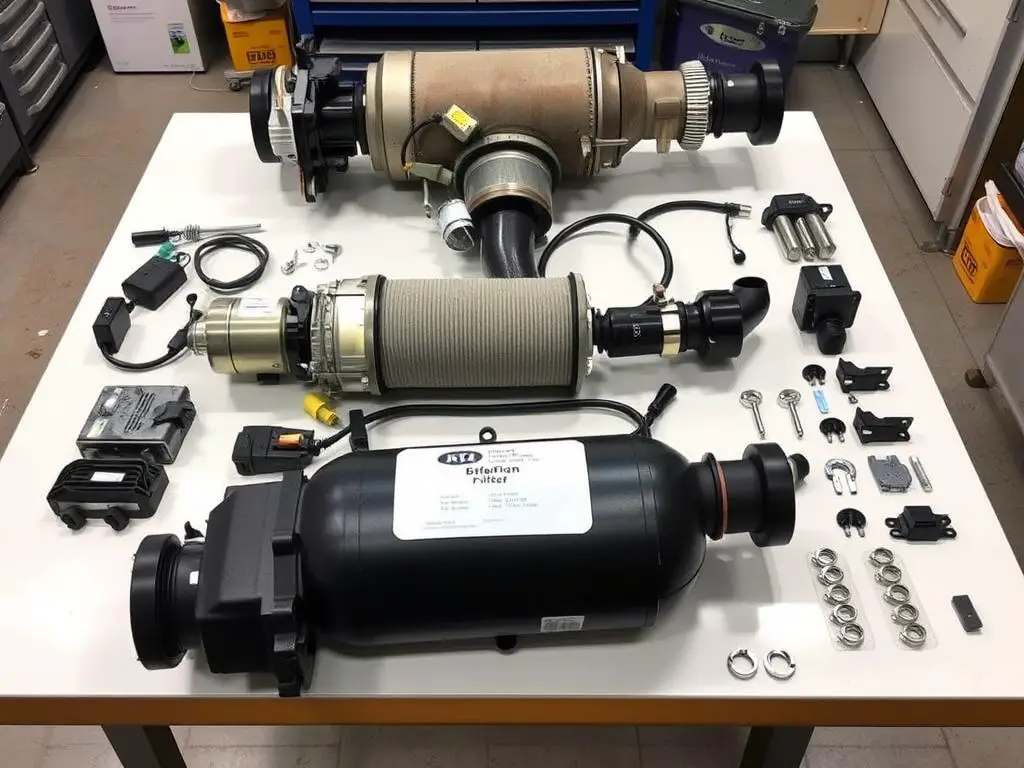
Frequently Asked Questions About Volvo Regeneration
How often should a Volvo truck regenerate?
Under normal operating conditions, a Volvo truck will typically require a parked regeneration every 500-700 miles for short-haul operations or 1,000-1,500 miles for highway operations. Active regenerations occur more frequently, approximately every 200-300 miles depending on driving conditions. These intervals can vary significantly based on driving patterns, load, and environmental factors.
What do the different regeneration dashboard lights mean on a Volvo?
Volvo trucks use several indicator lights for the DPF system:
- Solid DPF light: Active regeneration in progress, continue normal driving
- Flashing DPF light: Parked regeneration required soon
- Flashing DPF light with check engine light: Immediate parked regeneration required
- Solid DPF and check engine lights with amber triangle: Engine derate active due to postponed regeneration
Can I drive my Volvo truck during regeneration?
You can continue driving during an active regeneration, which happens automatically while the truck is in operation. However, you cannot drive during a parked regeneration, which requires the vehicle to be stationary with the parking brake applied. Forced regenerations also require the truck to be parked and are typically performed by service technicians.
How can I reduce the frequency of regenerations on my Volvo?
To reduce regeneration frequency:
- Maintain highway speeds when possible to promote passive regeneration
- Ensure regular maintenance of fuel injectors and EGR system
- Use high-quality ultra-low sulfur diesel fuel
- Follow recommended oil change intervals using approved oil types
- Address any engine performance issues promptly
- Avoid extended idling when possible
How much fuel does a Volvo regeneration use?
A typical parked regeneration on a Volvo truck consumes approximately 1-2 gallons of diesel fuel during the 30-60 minute process. Active regenerations while driving use less additional fuel, typically 0.5-1 gallon above normal consumption. The exact amount varies based on engine model, ambient temperature, and soot load.

Diagnostic Tools for Volvo Regeneration Management
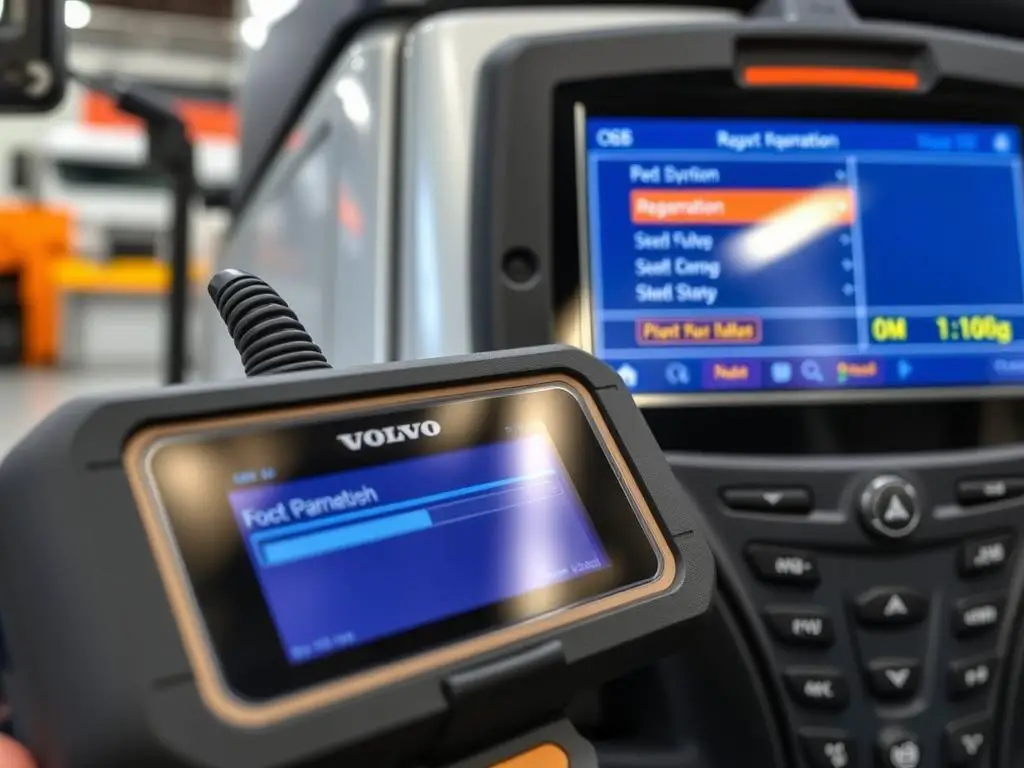
For fleet owners and operators who frequently deal with regeneration issues, investing in a quality diagnostic tool can save significant time and money. These tools allow you to:
- Monitor soot load levels in real-time
- Initiate forced regenerations when needed
- Read and clear DPF-related fault codes
- View exhaust system temperatures and pressures
- Reset service intervals after maintenance
Conclusion: Managing Volvo Regeneration Effectively

Proper regeneration management keeps your Volvo truck running efficiently
Understanding how long a regeneration takes on your Volvo truck is essential for efficient fleet management and avoiding unexpected downtime. While most regeneration cycles complete within 30-60 minutes, various factors can extend or shorten this timeframe.
By following Volvo’s recommended procedures, maintaining your engine properly, and addressing regeneration requests promptly, you can minimize disruptions and extend the life of your DPF system. Remember that ignoring regeneration indicators can lead to severe consequences, including costly repairs and significant operational restrictions.
For persistent regeneration issues, consulting with a qualified Volvo technician or investing in professional diagnostic tools can provide long-term solutions that keep your truck running at peak performance.

